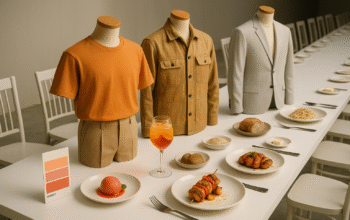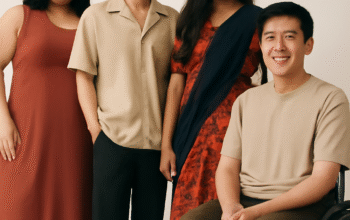The global traction of Singaporean designers is best understood as a playbook that blends creative intelligence with systems thinking. It starts with a design grammar shaped by a multilingual city—clean geometry, confident color restraint, and the reinterpretation of Asian ceremonial dress for everyday sophistication. That grammar reads fluently in New York, Paris, and Shanghai, where buyers seek novelty packaged with wearability.
Names illustrate the range. Andrew Gn represents maximal craft executed with Parisian refinement, while Ashley Isham delivers red-carpet fluidity with sculptural intent. Thomas Wee’s tailoring legacy and Lai Chan’s cheongsam mastery reveal a long arc of local expertise. Contemporary labels like max.tan and Stolen explore asymmetry and cutouts as architectural problems, a reminder that Singapore’s design scene often treats clothing like intelligent objects.
A solid support lattice enables this creativity. Tertiary programs at LASALLE and NAFA emphasize both concept and commerce, producing designers who can speak to buyers and factories in the same meeting. Industry bodies and incubators plug brands into mentors, accountants, and IP lawyers—unglamorous, but essential for negotiating wholesale terms, distribution agreements, and trademark filings abroad. Design Orchard adds real-time customer feedback, so silhouettes can be iterated before trade-show season.
Supply-chain pragmatism is another signature. Designers prototype locally, then deploy regional networks for production—Indonesia for artisanal textiles, Vietnam for precision sewing, Malaysia and Thailand for flexible capacity. Small-batch drops, waitlists, and made-to-order keep inventory aligned with demand. Digital prototyping reduces fabric waste and increases fit accuracy, critical when serving customers across climates and modesty preferences.
Positioning and storytelling give the strategy its emotional core. Rather than chasing trend volatility, many Singaporean labels lean into heritage as technique: Peranakan motifs abstracted into prints, kebaya seams echoed in contemporary dresses, or batik panels used as punctuation within minimalist silhouettes. Editorials and social content spotlight the maker’s process, which resonates with global consumers fatigued by disposable fashion.
Market entry is incremental and data-led. Designers secure multi-brand stockists in gateway neighborhoods, attend targeted trade shows, and build relationships with stylists for film and awards circuits. Accessories, footwear, and small leather goods provide an approachable entry price and higher repetition rates; apparel anchors the brand identity. Occasional collaborations with museums, hotels, or cultural festivals add credibility and cross-audience exposure.
The constraints of a compact market become advantages. High operating costs force clarity: tight collections, fabric continuity, and timeless cuts. Limited local manufacturing pushes brands to master vendor management across borders. The city’s logistics and financial infrastructure reduce friction for global shipping, returns, and currency handling—details that ultimately shape customer experience.
Taken together, this playbook shows why Singaporean designers matter internationally: they deliver rigor without sterility, heritage without pastiche, and business discipline without sacrificing soul. In an industry recalibrating toward sustainability and longevity, the Singapore model feels not just competitive, but prescient.




